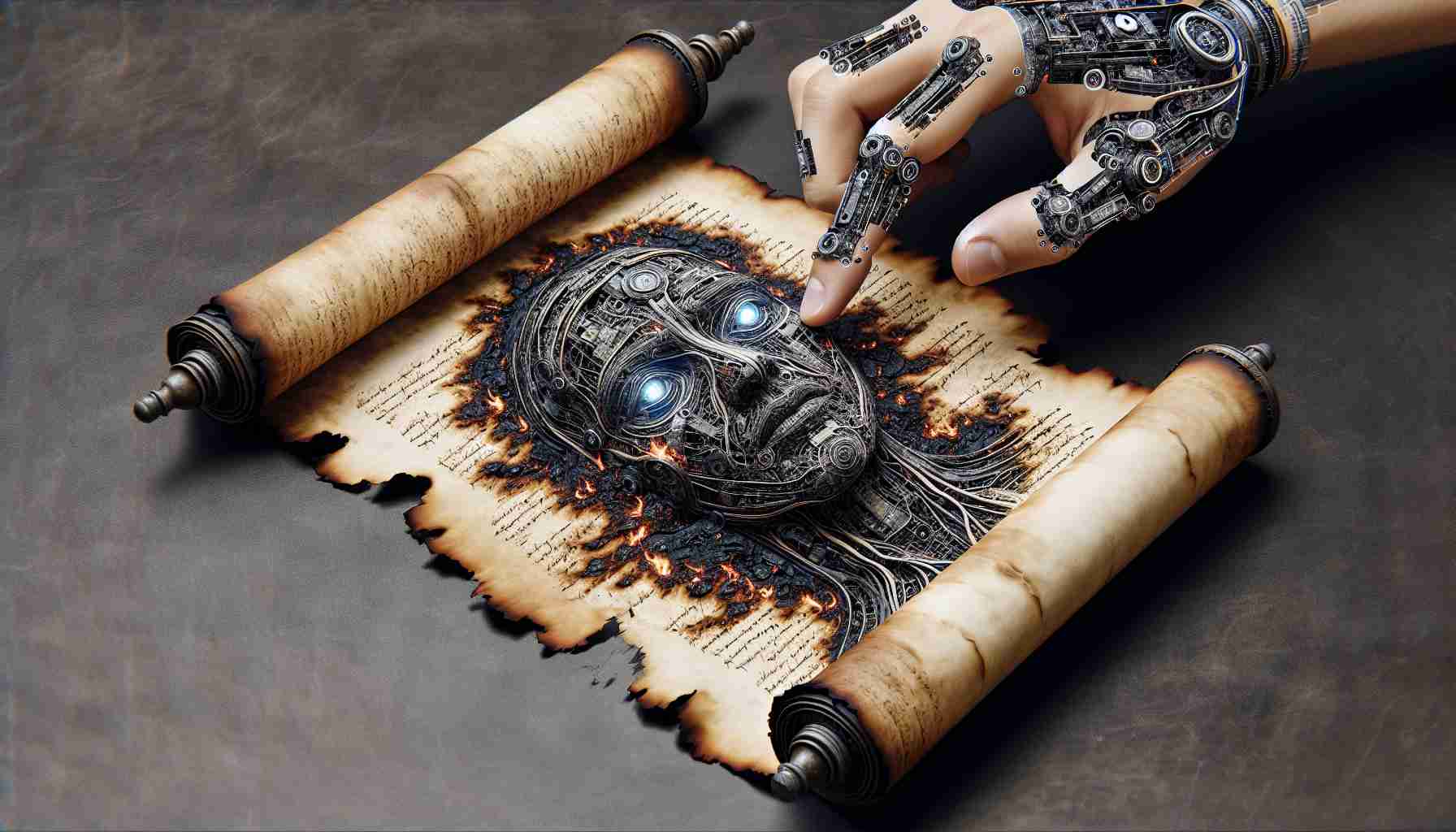Researchers have announced a groundbreaking discovery in the field of papyrology through the use of artificial intelligence. By utilizing computer tomography and an algorithm that detects traces of ink, scientists were able to read fragments of a nearly two-thousand-year-old scroll that had been damaged.
As a result of the eruption of Mount Vesuvius in 79 AD, Pompeii and Herculaneum were destroyed, and many scrolls were buried under layers of ash and volcanic debris. Almost two thousand years later, thanks to the Vesuvius Challenge, a competition announced in 2023, it was possible to decipher the text from one of these undiscoverable scrolls. High-resolution scans were taken using a computer tomography, and then, with the help of artificial intelligence, the images of the scroll were virtually “unfolded.”
According to researchers, this discovery is groundbreaking in the field of papyrology. The charred scroll that was deciphered is believed to originate from Herculaneum and is attributed to Philodemus of Gadara. The text explores the topic of pleasure, questioning what its source is when it comes to a mixture of various elements.
The success of the Vesuvius Challenge marks the beginning of a new era that opens the doors to deciphering further fragments of charred scrolls. Scientists aim to automate the process of scanning the surface of papyrus and improve the detection of ink. These scrolls hold immense historical value as they constitute the only surviving library from ancient Rome.
This discovery not only revolutionizes the field of papyrology but also opens new perspectives in historical research. Deciphered scrolls can shed light on the lives of ordinary Egyptians and provide insights into various aspects of that era, ranging from letters and property deeds to everyday matters.
The competition to decipher additional fragments of scrolls will take place this year, and scientists hope to decipher 85% of the scroll’s content and unfold all the preserved scrolls. As a result, artificial intelligence may play a crucial role in uncovering the secrets of the past through the unraveling of charred scrolls.
FAQ:
1. What was the groundbreaking discovery in the field of papyrology?
The groundbreaking discovery was the decipherment of fragments from a nearly two-thousand-year-old scroll using artificial intelligence, computer tomography, and an algorithm that detects traces of ink.
2. What events led to the destruction of Pompeii and Herculaneum?
The destruction of Pompeii and Herculaneum occurred as a result of the eruption of Mount Vesuvius in 79 AD.
3. How was the text from an undiscoverable scroll deciphered?
Through the Vesuvius Challenge competition, scientists conducted high-resolution scans of the scroll using computer tomography and then virtually “unfolded” the images of the scroll with the help of artificial intelligence.
4. What is the historical value of charred scrolls from ancient Rome?
Charred scrolls hold immense historical value as they represent the only surviving library from that period.
5. What perspectives are opened up by these discoveries?
Deciphered scrolls can shed light on the lives of ordinary Egyptians and provide insights into various aspects of that era.
Glossary:
– Papyrology: The study of papyri and other written documents on them.
– Computer Tomography: A medical imaging technique that uses X-ray radiation to obtain cross-sectional images of the body.
– Algorithm: A set of instructions and procedures used to perform a task within computation.
– Scroll: A long strip or sheet of material on which text is written.
– Vesuvius Challenge: A competition announced in 2023 aimed at deciphering scrolls destroyed during the eruption of Mount Vesuvius.
Suggested related links:
– Nauka.gov.pl
– Papirusy.edu.pl
The source of the article is from the blog procarsrl.com.ar
